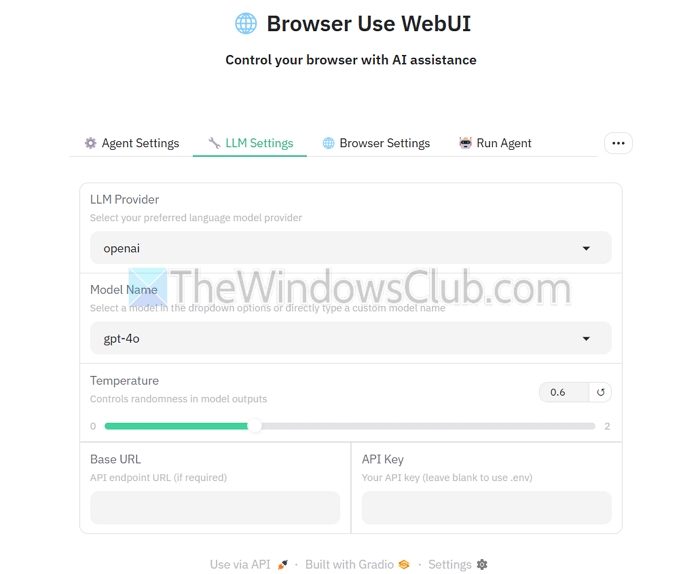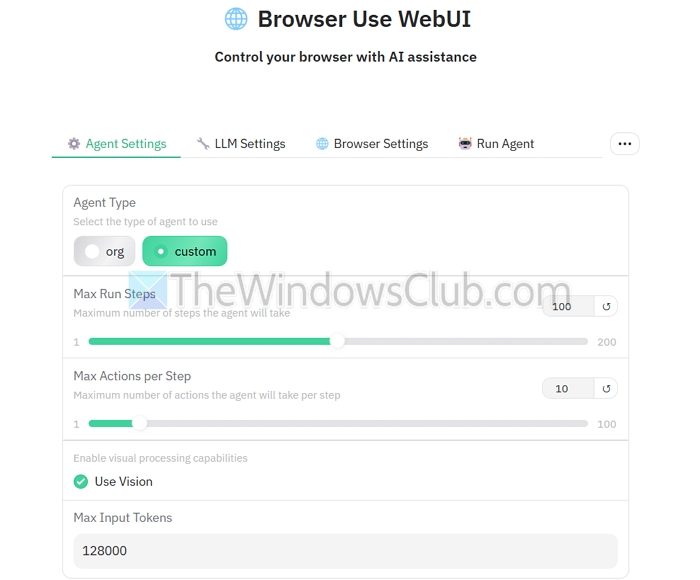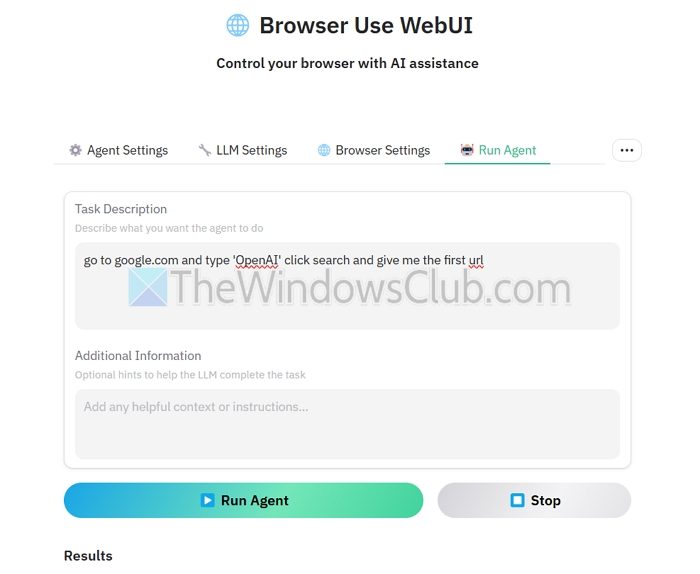AI agents are slowly becoming a thing, but many people aren’t aware of how to get started with them, especially how to connect an AI agent to their browser and perform different tasks such as automation, web scraping, testing, and more. To help you with this, a GitHub repo called Browser Use provides one of the easiest ways to connect your AI agents with the browser.

What is Browser Use?
Browser Use is an open-source Python library that enables AI agents to navigate web pages, extract data, and automate interactions. It supports multi-tab management, element tracking, and self-correcting mechanisms while integrating with LLMs like GPT-4 and Claude 3 for seamless AI-driven browser automation.
How to use Browser Use WebUI on Windows 11/10?
Before using Browser-use, ensure you have your API key from your preferred LLM model, such as OpenAI, Anthropic, DeepSeek, etc. Without an API key, you won’t be able to use the repository. Once you have it, follow the steps below:
1] Getting started
- First, start by installing Python’s latest version from its official website.
- You will also need to download & install Git.
- Next, go to Windows search, type CMD, right-click on it, and open as admin.
- In the CMD, run the following command to clone the repository:
git clone https://github.com/browser-use/web-ui.git
cd web-ui
2] Creating a virtual environment
The next step would be to create a virtual environment. So, in CMD, run the following commands:
python -m venv venv
venv\Scripts\activate
3] Install dependencies
Next, you will need to install the necessary dependencies. For this, run the following command and wait for a while:
pip install -r requirements.txt
Read: How to install Python in Windows
4] Install playwright
Playwright is a browser automation library used by Browser Use. To install it, run the command:
playwright install
5] Running Browser Use
Once you have installed everything, it’s time to start your project. So, in the command prompt, run the following command:
python webui.py --ip 127.0.0.1 --port 7788
After running the command, wait for a moment, and you will see a URL with an IP address on the screen. Simply copy and paste it into your browser’s address bar, or you can use this URL: http://127.0.0.1:7788/.
6] Configuring & Running Browser Use
From the Browser Use dashboard, you will need to configure your AI agent tool.
- First, click on LLM settings. From here, select your LLM provider, model name, base URL, and API key.

- Next, go to Agent settings and configure your agent type, maximum run steps, actions per step, and other settings. The same needs to be done for Browser Settings (configure these settings as per your requirements).

- Finally, go to Run Agent, type a task description and additional information, and click on the Run Agent button to start using it.

So, that was how you can use Browser Use. It is a great tool for extracting interactive elements, conducting deep research, automating workflows, and more. Go ahead and try it yourself to see how it works for you.
Can I use Browser Use without an API key?
To use Browser Use, an API key from an LLM provider (such as OpenAI, Anthropic, or DeepSeek) is required. Without it, the AI agent won’t be able to process tasks or interact with web pages effectively.
Does Browser Use support headless browsing?
Browser Use leverages Playwright, which supports headless browsing. This means you can automate tasks without opening a visible browser window, making it ideal for web scraping, testing, and automation in server environments.